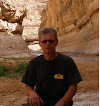04.07.2013 – 05.07.2013
The journey by car : Cusco - Urubamba - Ollantaytambo - Santa Maria - Santa Teresa - Hidroelectrica (224 km).
The journey on foot along the railway track : Hidroelectrica - Aguas Calientes (3 hours).
There are usually three different ways to visit Machu Picchu.
The first : four - day guided walk along the Inca Trail and that must be booked in advance, as only 500 hikers are allowed on that route per day. And in June the web page showed - the first free chance will be only mid-October, so this trip was canceled. Besides one could choose between routes of various lenghts like - , Salkantay Trek, Choquequirao Trek, etc. (google help ').
Second : by train. It used very likely by most of the visitors
Third : Drive your own car or use public transport (Ollantaytambo - Santa Maria - Santa Teresa - Hidroelectrica), leave the car at Hydroelectric power station and walk 8 miles along the railway up to Aqua Calientis, located at the foot of Machu Picchu.

Here is the map - the third option is in red.















